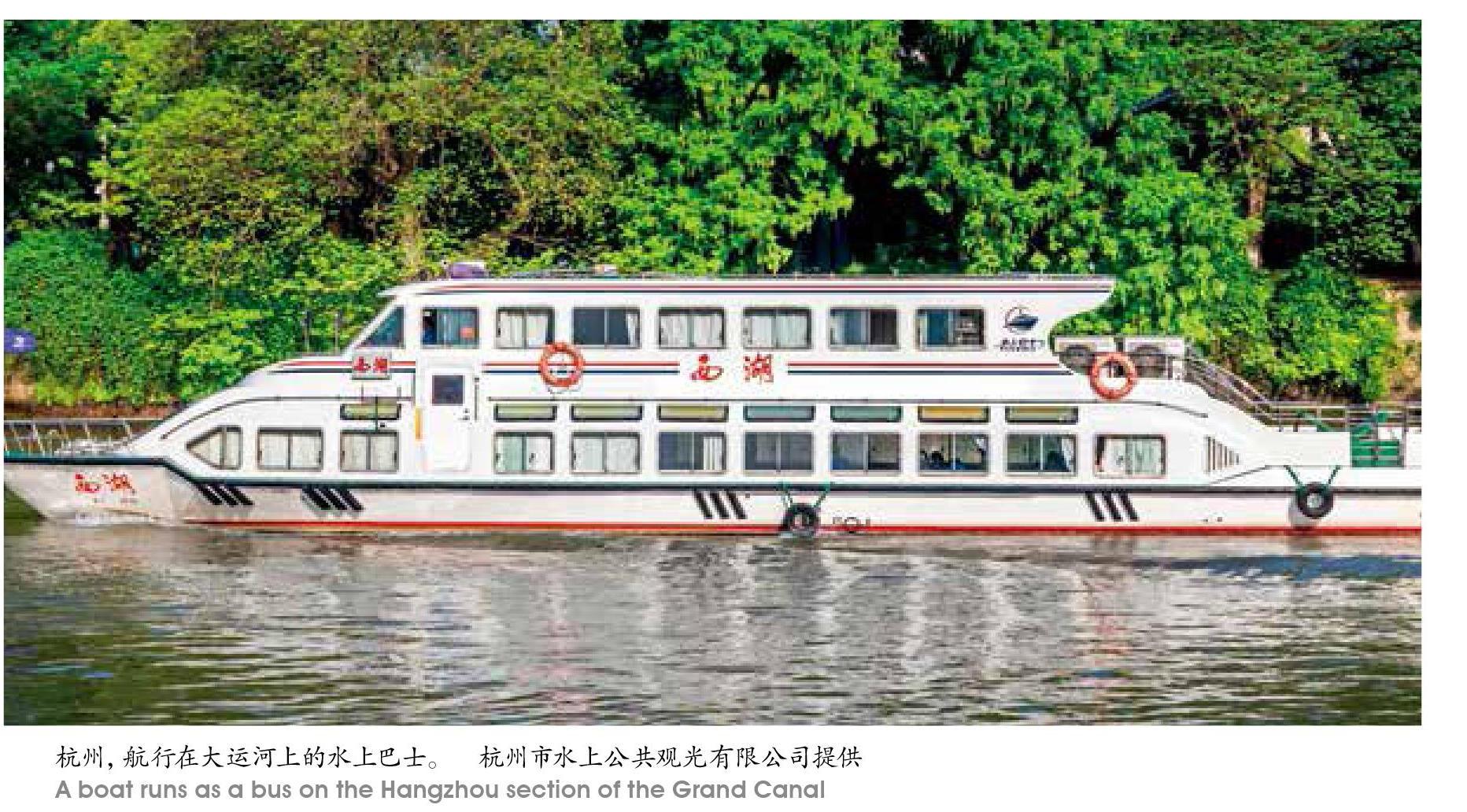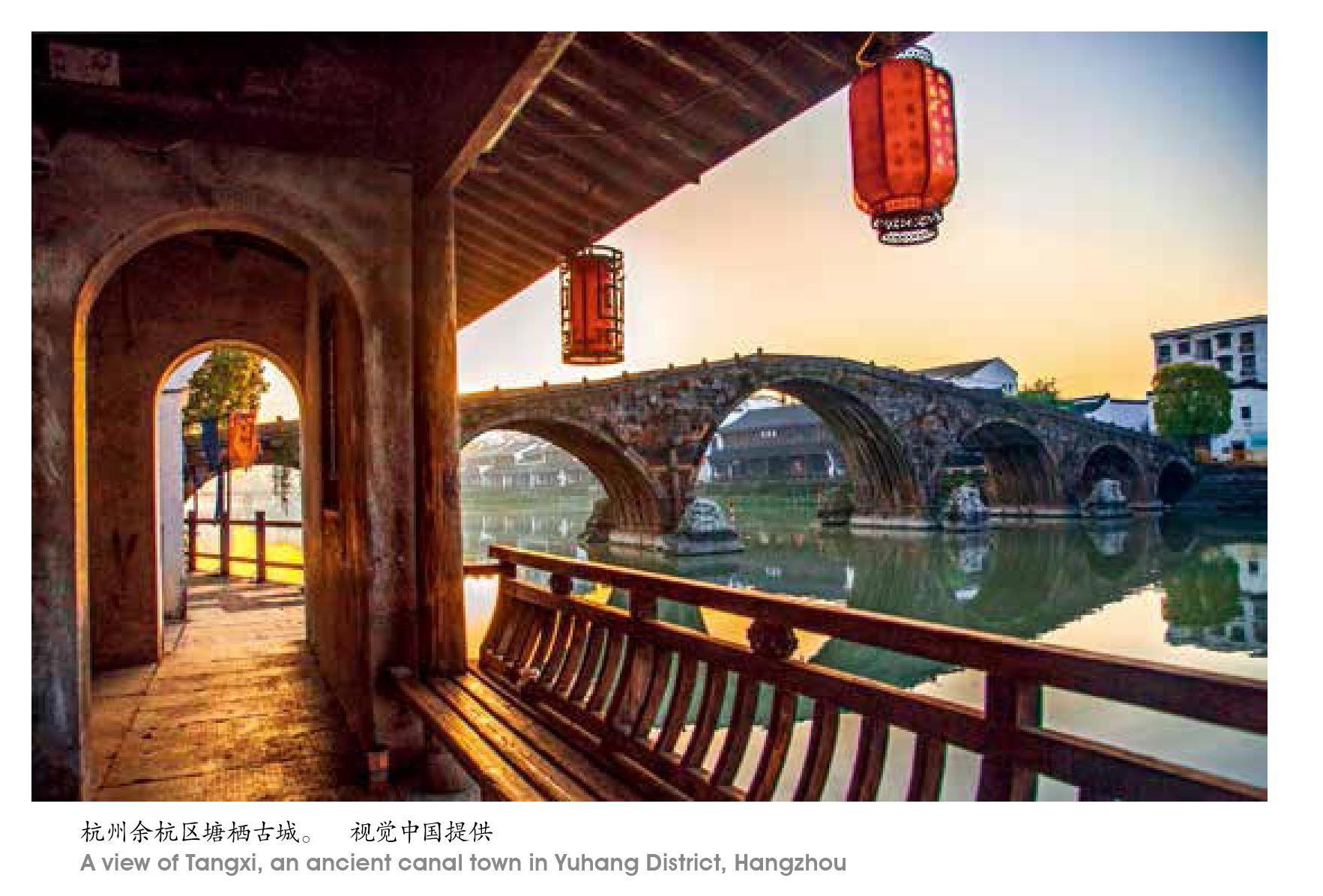坐着慢船走运河
周维强



这样闲逸和艺术地在运河上慢慢旅行的体验,让丰子恺终生念兹在兹。1972年,丰先生75岁了,还回味着写下了随笔《塘栖》。
两岸山水徐徐展开如长卷
专注于研究中国古代美术史的傅申先生说,董其昌的很多画是在船上创作而成的,这条船便是“书画船”。在古代,江南的交通“靠天然河道和密如蛛网的运河”,自绘画中心南移后,书画家出游每以水路为主,船的容积可以比较大,能够放置书桌;船行河上也比较平稳,适宜写字绘画,所以在“书画船”这一流动的画室上进行创作,就慢慢成了古代中国书画家特有的一个传统。宋代的米芾如此,明人董其昌更成了这一个传统的代表。
船行于平平静静的河上,固然是可以作画的一个外部条件,而画家恬适的心境,更是形成“书画船”传统的精神因素。明代陈继儒《岩栖幽事》里说:“住山须一小舟,朱栏碧幄,明棂短帆,舟中杂置图史鼎彝……”这是一种对应于这样的精神气质的文化趣味。
中国山水画还是一种“散点透视”,坐在船上,随着船行,两岸山水徐徐展开如长卷,这也适合了画家的山水写生。黄公望《富春山居图》,焉知不是融会了他自己行船看山水的经验呢?
在20世纪中国文艺家里,能够遗传中国古代书画家的这份精神气质,得了这份坐船趣味的,丰子恺可能是一个显例。
大运河流经浙江桐乡石门,由南朝东拐了个弯,此地人称石门湾,清光绪二十四年,农历九月廿六日(公元1898年11月9日),丰子恺出生在这个江南水乡的石门湾。
丰子恺后来离开故乡外出工作,总是常常回想起运河畔的生活。
“运河大转弯的地方,分出一条支流来。距运河二三百步,支流的岸旁,有一所染坊店,名曰丰同裕。店里面有一所老屋,名曰惇德堂……”这是丰子恺1939年9月6日写成于广西思恩的随笔《辞缘缘堂——避难五记之一》里的文字。丰同裕是丰家的产业,惇德堂是丰家的住所。丰先生说他抗战流亡中,每逢在报纸上看到关于石门湾的消息,晚上就会梦见故乡平居时的旧事。
丰子恺30岁时,靠了自己的一支笔,在惇德堂里面盖起了缘缘堂。
堂名“缘缘”,也属无意。丰子恺在小方纸上写了许多自己所喜欢且可以互相搭配的汉字,团成小纸球,两次抓阄,拿起来的都是“缘”字,于是就有了这个堂号。虽说是无意,但也未尝不含着“天意”,“缘”是丰先生所喜欢的,“缘”又是佛教的观念,而丰先生恰好又信佛,莫非这也是“缘”么?
这座闲闲地立在运河旁的缘缘堂,如丰先生本人,儒雅、素朴、明爽、轩敞,是大运河畔本色的江南水乡民居。房内家具也是他亲绘图案,请木工特制的“最合理的中国式家具”。院内种樱桃、芭蕉,门外植桃树、杨柳。丰子恺在这里春听燕语呢喃,看桃红柳绿,孩子们在秋千架下开心地戏耍;夏日黄昏则在芭蕉树下悠然小酌;秋夜明月照高楼,释卷听四面虫声唧唧;冬日写作至深夜,则每与孩子们在火炉里煨年糕。丰子恺和家人在缘缘堂里度过了近6年的颇富闲情逸致的岁月。他在这里画出了《红了樱桃,绿了芭蕉》《瞻瞻底车》等上百幅情趣盎然的漫画,写出了《杨柳》《山中避雨》等20余篇脍炙人口的散文随笔,后分别收入开明版的《缘缘堂再笔》和天马版的《随笔二十篇》。直到抗战军兴,先生一家辞别故乡开始逃难……
丰子恺说他走过五省,经过大小百数十个码头,才知道故乡石门湾真是一个好地方。这个位于嘉兴和杭州中间的地方,离开沪杭铁路15公里,这15公里有小轮船可以通航。早晨从石门湾搭轮船走运河便到了沪杭铁路上的长安车站,由此搭车,南行一小时可到杭州,北行一小时可到嘉兴、三小时可到上海。丰先生说他自己还是更喜欢坐着船走运河到杭州或者嘉兴。这些客船,朱漆栏杆玻璃窗,开船时间由客人自定,行李也不必用力捆扎、用心检点,客人但把被、褥、枕头、书册、烟袋、茶壶、热水瓶,甚至酒壺、菜榼……往船舱里送,船家自会给你布置在玻璃窗下的小榻及四仙桌上。客人“下船时仿佛走进自己的房间一样”。
丰子恺回忆说他最喜欢的是坐着这样的船去杭州,中间可以在塘栖住上一宿,上岸买些塘栖名产糖枇杷、糖佛手;再到靠河边的小酒店里去找一个幽静的座位,点几个小盆:冬笋、茭白、荠菜、毛豆、鲜菱、良乡栗子、熟荸荠……烫两碗花雕。“你尽管浅斟细酌,迟迟回船歇息。”假如天上下起了雨呢?那也可不管,“因为塘栖街上全是凉棚,下雨不相干的。”“这样,半路上多游了一个码头,而且非常从容自由。这种富有诗趣的旅行,靠近火车站地方的人不易做到,只有我们石门湾的人可以自由享受。”
这样闲逸和艺术地在运河上慢慢旅行的体验,让丰子恺终生念兹在兹。1972年,丰先生75岁了,还回味着写下了随笔《塘栖》:“吃过早饭,把被褥用品送进船内,从容开船。凭窗闲眺两岸景色,自得其乐。”傍晚船抵塘栖,上岸去吃酒了,不求菜多,但求味美,“呷一口花雕,嚼一片嫩笋,其味无穷。”塘栖的枇杷是有名的,在枇杷上市的季节,雨天坐了船,在船上吃着枇杷,看雨中风景,有着一种诗趣,“使人想起古人的佳句:‘人人尽说江南好,游人只合江南老。春水碧于天,画船听雨眠。‘闲梦江南梅熟日,夜船吹笛雨潇潇。古人赞美江南,不是信口乱道,却是亲身体会才说出来的。”
丰先生写的这篇随笔,开头就引了日本作家夏目漱石的小说《旅宿》,说火车把几百个人装在同样的箱子里蓦然地拉走,毫不留情,几百个人在这个箱子里又以同样的速度奔向同一车站,火车代表了20世纪的文明,又是那样地“蔑视个性”。在文章的结尾,丰先生说:“我谢绝了20世纪的文明产物的火车,不惜工本地坐客船到杭州,实在并非顽固。知我者,其唯夏目漱石乎?”
丰子恺先生当年在这样艺术的船行里,焉知没有构思了无量数的漫画、散文的腹稿呢?这或者也可以说是20世纪的丰子恺的“书画船”么?
我写这篇随笔时,真是想体验一下丰子恺先生坐船到塘栖的趣味。可我也知道,这样的船恐怕不易寻到了,但到塘栖运河畔老桥边酒楼上,三五老友小酌花雕,或者还是有可能的。
Boat Travel on Grand Canal:Way to Live for Artists of Yesteryears
By Zhou Weiqiang
Mister Fu Shen, a specialist of ancient Chinese art history, once told me that Dong Qichang (1555-1636), a great artist of the Ming Dynasty (1368-1644), created many paintings while going on a river journey. Such a boat is referred to as “art boat” in Jiangnan, a region of rivers and canals and lakes in the south of the Yangtze River Delta. In ancient times, artists in Jiangnan frequently traveled by boat when rivers functioned like a network of highways or railways of modern times. While traveling on a boat, they witnessed the beauty of nature and they had all the time of the world in their hands. Naturally, scholar artists learned how to turn a boat into a floating art studio, with a full array of devices needed for painting: a table and stationeries, so that they would not waste godsend inspirations.
In traditional Chinese painting, there is a widely used technique called multi-point perspective. I have reasons to believe this technique might have yielded from boat travels: you move and you see and your perspective changes. I even have reasons to believe that , a timeless ink-painting masterpiece by Huang Gongwang (1269-1354), was an inspiration based on such a multi-point perspective.
The tradition of painting on a boat was carried on into the 20th century. Feng Zikai (1898-1975) is known to have liked boat travels. He was born in Shimen (literally, stone gate), Tongxiang in northern Zhejiang. The town sits smugly at a bend where the Grand Canal turns from south to east. A professional artist whose paintings are still published today, Feng, when he was very young, prospered as painter of everyday life from a traditional scholars perspective.
His popularity spread and fortune accumulated. At 30, he was able to have a house built by the Grand Canal in Shimen. He designed all the furniture and refurbishment. An artist who traveled widely across the country, Feng Zikai commented that he became sharply aware that Shimen was a really nice place after he had seen more than a hundred river towns in five provinces. It was 15 kilometers away from a railway station on the Hangzhou-Shanghai Railway. The last 15 kilometers could be covered by a boat cruise. In his time, it took him about an hour to reach Jiaxing to the north by train and Hangzhou to the south by train. But he preferred to travel by boat if he wanted to go to Jiaxing or Hangzhou. The boat travel was really convenient and delightful. He could easily book a boat and decided when to leave. He could send in all the things for a trip to the boat in advance so that when he came to board the boat, all things were ready for a two-day river trip and it was as if he stepped into a hotel room furnished with all the necessities from home.
In his memoire, Feng said he preferred such a slow-going boat trip on the Grand Canal to Hangzhou. One highlight of such an unhurried trip was to spend a night on boat at Tangxi, an ancient river town on the way from Shimen to Hangzhou. In 1972, the 75-year-old artist and writer wrote an essay in which his memory of his boat trips on the Grand Canal from Shimen to Hangzhou is well presented in great detail. In Fengs description, we can learn that the artist loved to view the picturesque scenes on the canal from the boat, that he often sipped wine at a riverside restaurant in Tangxi, that he enjoyed loquat fruits in season at Tangxi, the best loquat producer in the entire Jiangnan, and that he always enjoyed a good night sleep on boat in Tangxi, fully believing ancient poems that described similar dreamlike experiences in Jiangnan. At the beginning of this memorable essay, Feng mentioned a short story by Japanese writer Soseki Natsume (1867-1916). In that story, the writer dismissed modern railway travels which, in his opinion, disregarded individuality as hundreds of people in boxes were carried off at the same speed to the same next station. At the end of the essay, Feng said he was by no means a hardcore conservative even if he declined traveling by train and he preferred costly and time-consuming boat trips to Hangzhou. He wondered if Soseki Natsume was the only person who would have understood him so well.
I wonder if Feng got the ideas about his paintings and essays on numerous boat trips from Shimen to Hangzhou. Today it is not likely to find such a manually-rowed boat to travel from anywhere to anywhere on the Grand Canal, but it would be extremely easy to dine and wine with friends at one of the riverside restaurants in Tangxi, which is now a big tourist attraction.
——千年文脉焕新生塘栖古镇

